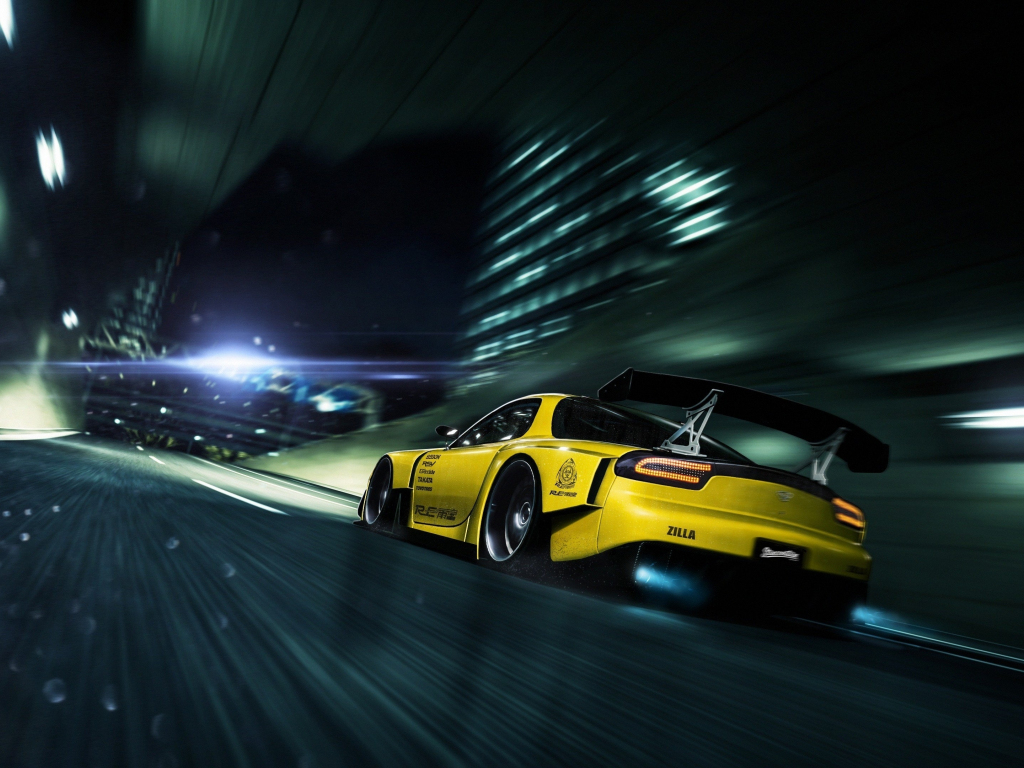Mazda RX-7
Anything with the moniker RX historically has also featured a rotary engine, but the RX-7 always had just that little bit more flair than its related RX family. The RX appellation has played a huge role in Mazda’s history. The third and last version of the RX-7, which was produced between 1992 and 2002 during a ten-year period, is undoubtedly the one that UK car purchasers are most familiar with.
The FD RX-7’s primary distinguishing characteristic was its usage of a twin-turbocharged twin rotor 13B-REW engine, which was imported in comparatively small numbers to the UK. When the RX-7 was introduced in the UK, it had 237 horsepower, but because to a light curb weight, it wasn’t far behind more potent competitors like the Toyota Supra, Honda NSX, and Nissan Skyline GT-R.
The RX-7 is now a rare animal, especially one that hasn’t been touched by the greasy hands of amateur tuners, but if you can find one with a clean history and responsible prior owners, the benefits are significant. There is a catch with the RX-7, though. Like all rotary-engined Mazdas, the RX-7’s highly stressed engine necessitates cyclical engine rebuilds due to the rotor seals’ degeneration in addition to tons of TLC to remain healthy.

RX-7 in Detail
When the first RX-7 was introduced in 1978, rotary engines and its lightweight, compact fastback design were a big hit with customers. Encouraged by a robust Japanese economy, Mazda subsequently introduced the bigger, heavier FC model in 1986 with a greater emphasis on the GT genre. However, it failed to impress customers like the previous model had, prompting Mazda to go back to its lightweight beginnings with the third and, as of this writing, final generation FD.
The 1992 model was undoubtedly one of the most eye-catching creations to have emerged from Japan up to that point, with its low-slung, shrink-wrapped bodywork standing in stark contrast to the FC. The 13B-REW twin turbo engine was the only engine offered when the RX-7 was introduced, and it came with both a sluggish 4-speed automatic and a 5-speed manual transmission.
The engine itself was based on the one found in the Mazda Cosmo coupe, a four-seater GT sold exclusively in Japan that pioneered the use of digital sat-nav and paired turbocharging with a rotary engine.
The RX-7, which has a sequential twin-turbo arrangement, only uses the second turbo over 4000 rpm and uses just one turbo at lower engine speeds to improve response. Although it lessened turbo-lag, the RX-7’s rotary engine still had problems, primarily because of the engine’s inherent lack of torque. The loss of the previous RX-7’s heady rev limits, which were limited to an average 8000 rpm, was another compromise brought on by the turbos.
The RX-7 cost a significant £32,000 when it was introduced in the UK in 1992 to compete with the Porsche 911, but after a year of weak sales, Mazda reduced the price to £25,000. UK automobiles were configured with firmer suspension and struts.
The most focused vehicles, such as the renowned Spirit R and Type RZ made famous in racing games, were entirely unique to Japan. Later cars finally increased power to the 276bhp “gentleman’s agreement” threshold, with kerb weight always hovering around 1300kg.
